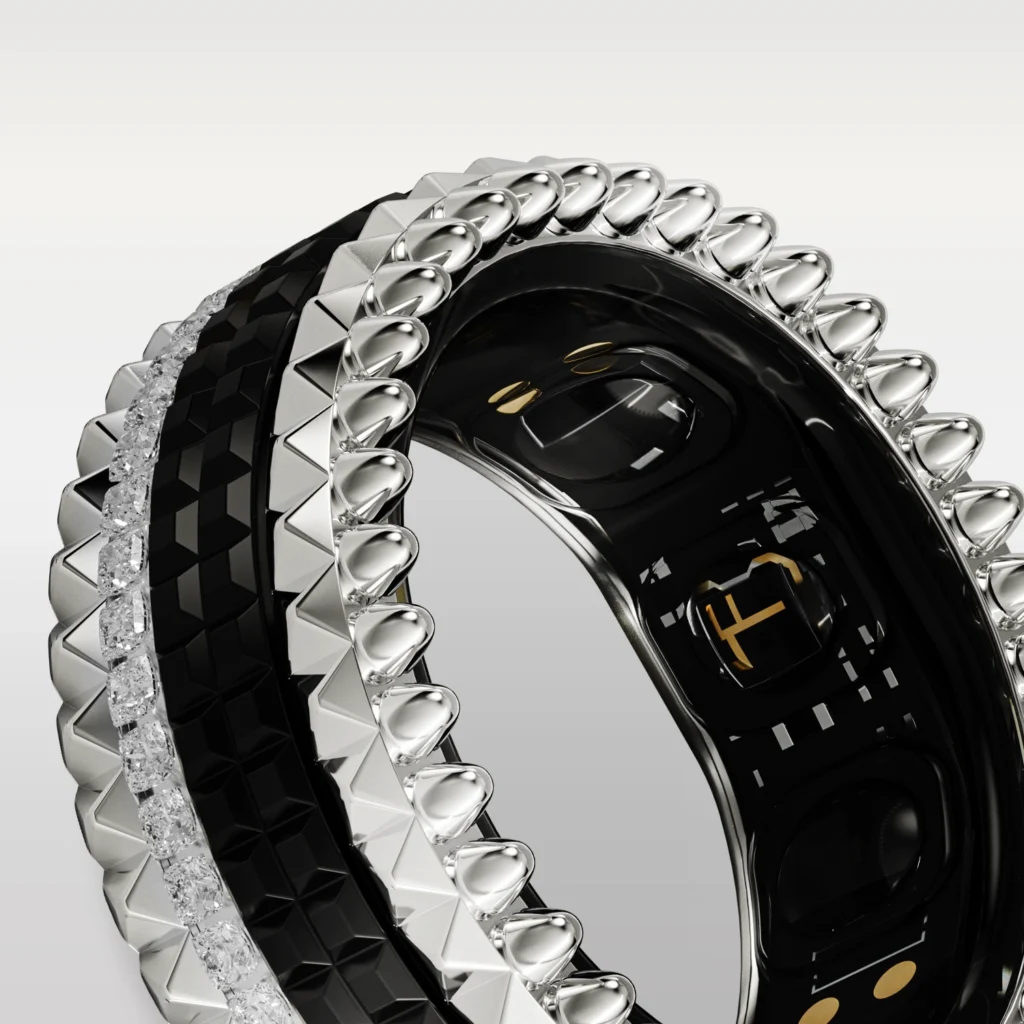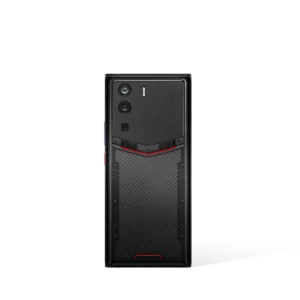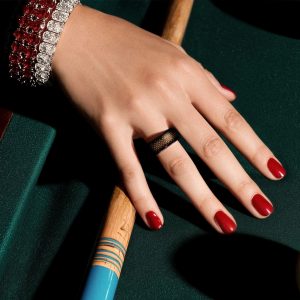
Are you struggling to keep track of your well-being amidst a busy life? Discover how smart rings can offer a discreet yet powerful solution to monitor your health.
What You'll Learn:
- The core functionality and benefits of health tracker rings.
- How to easily set up and start using your new smart ring.
- Essential best practices for maximizing your health insights.
- Advanced techniques for leveraging your ring's full potential.
- A comparison of leading models like Oura, Samsung, and Vertu.
What is a Ring with Health Tracker?
Understanding Ring with Health Tracker
A health tracker ring is a wearable technology device designed to be worn on a finger, similar to a traditional ring. Unlike bulkier smartwatches or fitness bands, these rings offer a more subtle and often more comfortable way to monitor various physiological metrics. They are equipped with an array of sensors that continuously collect data about your body, providing insights into your sleep patterns, activity levels, heart rate, body temperature, and more. The data is typically synced wirelessly to a companion smartphone app, where users can view trends, receive personalized feedback, and set health goals.
Key Benefits and Features
The allure of health tracker rings lies in their discreet design and comprehensive data collection. Key benefits and features include:
- Sleep Tracking: Detailed analysis of sleep stages (light, deep, REM), sleep duration, and sleep quality. This is often a primary focus for many users.
- Activity Monitoring: Tracking steps, distance, calories burned, and active minutes. Some rings can automatically detect different types of workouts.
- Heart Rate Monitoring: Continuous or on-demand measurement of your resting heart rate and heart rate variability (HRV), which are indicators of stress and recovery.
- Body Temperature Sensing: Tracking subtle shifts in body temperature, which can indicate illness, ovulation cycles, or recovery.
- Stress Management: Insights into stress levels based on heart rate and HRV data, often with guided breathing exercises or mindfulness prompts.
- Long Battery Life: Many rings boast battery life of several days to over a week on a single charge, reducing the need for frequent charging.
- Water Resistance: Typically designed to be worn 24/7, including during showers or swimming.
- Stylish Aesthetics: Available in various finishes and designs to complement personal style.
| Feature | Oura Ring Gen3 | Samsung Galaxy Ring (Expected 2025) | Vertu Ring (Hypothetical) |
| Primary Focus | Sleep, Recovery, Readiness, General Wellness | Sleep, Activity, Heart Health, Fitness | Luxury, Connectivity, Basic Wellness |
| Sensors | PPG (HR, HRV), Temp, Accelerometer, Infrared | PPG (HR, HRV), Temp, Accelerometer, ECG | Basic HR, Accelerometer |
| Sleep Tracking | Excellent, detailed stages & scores | Expected to be strong, similar to watches | Basic sleep duration |
| Activity Tracking | Good, automatic detection limited | Comprehensive, auto-detection expected | Basic step counting |
| Battery Life | 5-7 days | Expected 5-9 days | Expected 2-3 days |
| App Ecosystem | Oura App (Subscription for full insights) | Samsung Health, integrated with Galaxy ecosystem | Basic companion app |
| Price Point | Premium (399 + optional subscription) | Premium (Estimated similar to Oura) | Ultra-Premium (Likely $1000+) |
| Unique Selling Point | Deep readiness and recovery insights | Seamless integration with Samsung ecosystem | Exquisite craftsmanship and luxury brand |
How to Get Started with Ring with Health Tracker
Prerequisites and Requirements
Before diving in, ensure you have the necessary components:
- A Health Tracker Ring: Choose the model that best suits your needs and budget.
- A Compatible Smartphone: Most rings require a smartphone running iOS or Android. Check the specific model's compatibility.
- Bluetooth Connectivity: Ensure your smartphone has Bluetooth enabled.
- Wi-Fi Connection: For initial setup and data syncing.
- A Dedicated App: Download the manufacturer's app (e.g., Oura App, Samsung Health) from your device's app store.
- An Account: You'll likely need to create an account with the manufacturer to store and access your data.
Step-by-Step Setup Process
Getting your health tracker ring up and running is usually straightforward:
- Charge Your Ring: Before the first use, fully charge your ring using the provided charging dock.
- Download the App: Search for the official app associated with your ring (e.g., “Oura” or “Samsung Health”) in your smartphone's app store and install it.
- Create/Log In to Your Account: Open the app and follow the prompts to create a new account or log in if you already have one.
- Pair Your Ring: Turn on Bluetooth on your smartphone. The app will guide you through the pairing process. This usually involves bringing the ring close to your phone and confirming the connection.
- Configure Your Profile: Enter your personal details such as age, gender, height, and weight. This information helps the ring provide more accurate personalized insights.
- Grant Permissions: The app will request permissions to access your phone's data (e.g., location, Bluetooth) and potentially health data from other apps. Review these carefully and grant what you are comfortable with.
- Wear Your Ring: Place the ring on your finger. For most rings, the index, middle, or ring finger on either hand works best. Ensure a snug but comfortable fit.
- Start Tracking: The ring will begin collecting data automatically. Check the app regularly to view your progress and insights.
“The setup was surprisingly easy. I had my Oura ring connected and tracking within 10 minutes of unboxing.” – John P., Tech Reviewer
Best Practices for Ring with Health Tracker
Industry Standards
Adhering to certain practices ensures you get the most accurate and useful data from your health tracker ring.
- Consistent Wear: For optimal sleep and recovery tracking, wear your ring every night.
- Proper Fit: A ring that is too loose may slide around, affecting sensor accuracy. A ring that is too tight can be uncomfortable and potentially impede circulation.
- Regular Syncing: Sync your ring with the app daily to avoid data loss and ensure you have the latest insights.
- Keep Sensors Clean: Gently wipe the sensors on the inside of the ring with a soft, damp cloth to remove any dirt or oils that might interfere with readings.
- Stay Hydrated: Dehydration can affect physiological readings.
Expert Recommendations
Health experts and power users offer valuable advice:
- Focus on Trends, Not Daily Fluctuations: While daily scores are informative, look for long-term trends in your sleep, activity, and recovery data. This provides a more holistic view of your health.
- Contextualize Your Data: Understand that your body's metrics can be influenced by various factors like illness, travel, stress, and diet. Don't overreact to single data points.
- Utilize the App's Features: Explore all the features within the companion app. Many offer guided meditations, workout tracking, and educational content related to your data.
- Listen to Your Body: The data is a guide, not a dictator. If the ring indicates you're recovered but you feel fatigued, prioritize rest. Conversely, if you feel energized despite a “low readiness” score, proceed with caution.
- Consider the Subscription: For rings like Oura, the subscription unlocks the most in-depth analysis and personalized recommendations. Evaluate if this added value is worth the cost for your goals.
Advanced Ring with Health Tracker Techniques
Professional Tips
For those looking to go beyond the basics, consider these advanced strategies:
- Correlate with External Factors: Manually log or note significant life events (e.g., late-night work, alcohol consumption, new exercise routine) in the app or a separate journal to see how they impact your metrics.
- Experiment with Sleep Schedules: Use the data to test different bedtime routines or sleep durations to find what optimizes your sleep quality and readiness scores.
- Monitor HRV for Stress: Pay close attention to your Heart Rate Variability (HRV). A consistently lower HRV can be an early indicator of elevated stress or impending illness.
- Track Body Temperature Shifts: For women, tracking subtle body temperature changes can provide insights into the menstrual cycle and potential fertile windows.
Advanced Strategies
Maximize the utility of your health tracker ring with these strategic approaches:
- HRV Biofeedback: Some advanced users use HRV data in conjunction with biofeedback techniques to actively manage stress and improve physiological regulation.
- Performance Optimization: Athletes can use readiness scores and recovery metrics to fine-tune training intensity and prevent overtraining.
- Personalized Health Goals: Instead of generic goals, use your ring's data to set highly personalized objectives, such as increasing deep sleep by 10% or improving resting heart rate by 5 bpm.
- Integrate with Other Health Data: If your ring's app allows, connect it with other health and fitness platforms (e.g., Apple Health, Google Fit) for a more comprehensive overview of your health.
“I started tracking my caffeine intake against my sleep data and found that late-day coffee significantly impacted my deep sleep. Adjusting my habits based on the ring’s insights was crucial.” – Dr. Anya Sharma, Wellness Coach
FAQ (Frequently Asked Questions)
Q: How accurate are health tracker rings compared to smartwatches?
A: Generally, health tracker rings and smartwatches use similar sensor technology (like PPG for heart rate). Accuracy can vary by brand and specific sensor implementation. Many users find rings to be particularly strong in continuous sleep and temperature tracking due to their stable placement on the finger.
Q: Do I need a subscription to use a health tracker ring?
A: Some brands, like Oura, offer a subscription service that unlocks advanced features, personalized insights, and detailed reports. Basic tracking and data visualization are often available without a subscription. Samsung's approach typically integrates with their existing Samsung Health platform, which may not require a separate subscription for core features.
Q: Can I wear my health tracker ring 24/7?
A: Yes, most health tracker rings are designed for continuous wear, including during sleep, showering, and even swimming (check specific water resistance ratings). This 24/7 wear is crucial for collecting comprehensive data.
Q: What is the best finger to wear a health tracker ring on?
A: For optimal sensor contact and comfort, most manufacturers recommend wearing the ring on your index, middle, or ring finger. The fit should be snug enough to prevent movement but not so tight that it restricts circulation or causes discomfort.
Q: What is the difference between Oura Ring and Samsung Galaxy Ring?
A: The Oura Ring is a mature product known for its deep sleep and readiness insights, often requiring a subscription for full functionality. The Samsung Galaxy Ring, expected in 2025, aims to leverage Samsung's extensive health ecosystem and potentially offer features like ECG, integrating seamlessly with Samsung Health. Both are premium options focused on comprehensive health tracking.
Health tracker rings offer a compelling blend of advanced technology and discreet design, empowering individuals to gain deeper insights into their sleep, activity, and overall well-being. By understanding how these devices work, following best practices, and exploring advanced techniques, you can harness their full potential for a healthier lifestyle.
Ready to take control of your health? Explore the latest health tracker rings and find the perfect fit for your journey. Share your experiences or questions in the comments below!





